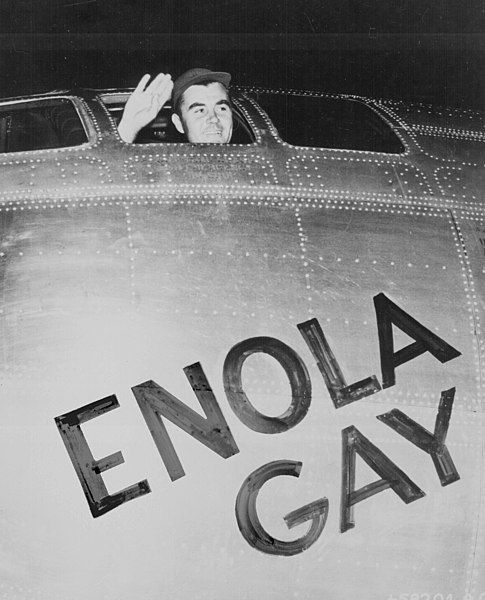On August 6, 1945 at 8:15 a.m. Japan Local Time the world changed.
Forty-three seconds after releasing the bomb nicknamed "Little Boy," pilot Col. Paul Tibbets was alerted to the blast by radioactivity tingling in his teeth and the metallic taste from electrolysis on his tongue. Ten and a half miles away, tens of thousands of people had already vanished in a brilliant flash. A massive firestorm would grip the city within minutes and kills thousands more. This photo taken minutes after the blast at a distance of six miles was found in a suburban Hiroshima grade school in 2013:

The photo below was taken after the removal of street and lot debris and revealed the full extent of the destruction.

As the first use of an atomic weapon against an enemy, the decision to drop the bomb on Hiroshima - and Nagasaki three days later - was controversial. The decision assuredly brought a very quick end to the war with Japan and in the eyes of most historians and military experts saved the lives of millions of combatants and civilians. For more on this historic event and its aftermath readers should visit the Harry S. Truman Library & Museum's outstanding archive of primary sources relating to the story.
 |
| Tibbets, pilot and commander, in the cockpit prior to takeoff for Hiroshima |
The last surviving Enola Gay crew member - Theodore "Dutch" Van Kirk - died at his home in Stone Mountain, Georgia, in 2014. It's one more indication that our greatest generation as an eyewitness to history is itself rapidly moving into history.
Sources
Photos and Illustrations:
Ground photo, gizmodo.com.au
Hiroshima aftermath, U.S. Navy Public Affairs Website, chinfo.navy.milEnola Gay photo, National Archives and Records Service
Photos and Illustrations:
Ground photo, gizmodo.com.au
Hiroshima aftermath, U.S. Navy Public Affairs Website, chinfo.navy.milEnola Gay photo, National Archives and Records Service

No comments:
Post a Comment